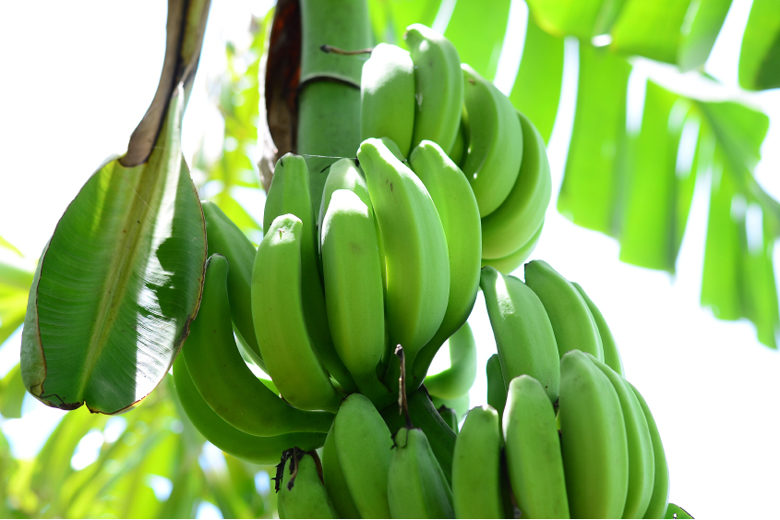
When you reach for foods that come from far away, such as coffee or bananas, do you ever wonder how they got to the supermarket? Or how the food was grown? Or who picked it and how they were treated?
These are good questions to ask as you learn more about modern agricultural practices, as well as the role food has on your body, environment and economy. I’m glad to see an increasing interest in supporting the hard-working farmers that stock our local supermarkets and provide our bellies with the food that nourishes us. And, while the rise of local and organic farms for everything from apples to tomatoes is exciting, it may be even more important to stop and consider the farming practices for exotic foods that come from far away, where people may be less fortunate.
Enter Fair Trade
Looking for “Fair Trade” produce may set your mind at ease that you are supporting farming practices that you can feel good about. Not to be misunderstood with “free trade,” Fair Trade goods — according to Fair Trade USA, a nonprofit organization and third-party certifier of Fair Trade products — are just that: fair, in every sense of the word. Free trade, on the other hand, is based on the economic theory that the market can operate without government intervention such as tariffs and subsidies.
Fair Trade products help to ensure that farmers and workers from all over the world are justly compensated for their labor, with the goal being to level the playing field by arming small-scale farmers with tools, information and training to farm productively. Ultimately, Fair Trade helps farmers in developing countries build sustainable communities and promotes a just global economy. How does Fair Trade accomplish this lofty goal?
When you buy Fair Trade products, you are supporting:
- A fair price for products; a base commodity price is set by the international Fair Trade Labeling Organization, which aims to cover the cost of production and basic living and medical expenses of farmers.
- Investment in people and the community, through a social premium, which means money is returned and invested into the local community for development projects such as building schools and health clinics.
- Environmental sustainability, as Fair Trade farmers are encouraged to use sustainable farming and production practices.
- Economic empowerment, by giving small-scale farmers at the bottom of the economic totem pole ownership in a portion of their business and a voice in decision making.
- Fair labor conditions, by adhering to child and human rights labor laws, encouraging female participation in production and leadership, and ensuring safe working conditions.
Good Bananas
Fair Trade produce has received extra attention for the banana — the fourth most important staple in the developing world, and the most-consumed fresh fruit in the U.S. Sadly, in many banana-growing communities, low wages and poor living conditions are a reality. Through Fair Trade, banana farmers are paid about 10 percent higher than the average market price and are given a premium: $1 for every box of bananas sold is committed toward community development projects. Since 2004, sales of Fair Trade-certified bananas have resulted in more than $2.8 million for community development in farmers’ communities. A wide variety of other fruits are now eligible for Fair Trade certification, including mangos, oranges, pineapple and avocados.
So, next time you visit your local grocery store, keep your eye out for a Fair Trade seal. By making this small shift, you utilize your purchasing power to impact developing communities all around the globe.
Try this award-winning recipe using a Fair Trade banana.
Warm Banana Split in a Jar
Recipe courtesy Jaime Ruisi for Sharon Palmer, RD
Makes 1 serving
Ingredients
1 tablespoon whole wheat flour
3 tablespoon old-fashioned oats
½ teaspoon cinnamon
1 ½ teaspoons brown sugar
1 tablespoon skim milk
2 tablespoon dark chocolate chips
1 small banana, sliced
½ cup frozen yogurt (plant-based or milk-based, according to your preference)
1 tablespoon walnuts, chopped
Instructions
- Preheat oven to 350 degrees.
- In a small bowl combine flour, oats, cinnamon, sugar, milk and chocolate chips. Mix well.
- Spoon half the flour mixture into a Mason jar.
- Slice the banana and place in the jar.
- Fill the jar with the remainder of the flour mixture. Place jar on a small baking dish and bake for approximately 15 minutes. Remove from the oven.
- Top off the baked banana split with a scoop of frozen yogurt and chopped walnuts.
Nutrition information per serving: Calories 365; protein 7g; carbohydrates 60g; fiber 8 g; total fat 14 g; saturated fat 3g; cholesterol 4 mg; and sodium 28 mg

